Papers by Xabier E. Barandiaran
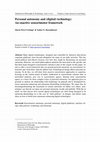
Many digital technologies, designed and controlled by intensive data-driven corporate platforms, ... more Many digital technologies, designed and controlled by intensive data-driven corporate platforms, have become ubiquitous for many of our daily activities. This has raised political and ethical concerns over how they might be threatening our personal autonomy. However, not much philosophical attention has been paid to the specific role that their hyper-designed (sensorimotor) interfaces play in this regard. In this paper, we aim to offer a novel framework that can ground personal autonomy on sensorimotor interaction and, from there, directly address how technological design affects personal autonomy. To do this, we will draw from enactive sensorimotor approaches to cognition, focusing on the central notion of habits, understood as sensorimotor schemes that, in networked relations, give rise to sensorimotor agency. Starting from sensorimotor agency as a basis for more complex forms of personal autonomy, our approach gives us grounds to analyse our relationship with technology (in general) and to distinguish between autonomy-enhancing and autonomy-diminishing technologies. We argue that, by favouring/obstructing the enactment of certain (networks of) habits over others, technologies can directly act upon our personal autonomy, locally and globally. With this in mind, we then discuss how current digital technologies are often being designed to be autonomy-diminishing (as is the case of "dark patterns" in design), and sketch some ideas on how to build more autonomy-enhancing digital technologies.
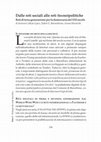
I ₍ ₎ a società diviene (in) rete. Questa era una delle tesi di Ma-L 1 nuel Castells già sul fini... more I ₍ ₎ a società diviene (in) rete. Questa era una delle tesi di Ma-L 1 nuel Castells già sul finire del secolo scorso. Con la spinta di una moltitudine di a ori, le reti digitali dispiegate nell'infrastru ura di Internet sono arrivate a permeare sempre più aspe i delle nostre vite personali e colle ive. Il più recente impa o può essere rilevato in fenomeni che vanno dalle elezioni che fecero Trump presidente (chiaramente influenzate da Facebook e Twi er) ai prezzi delle case a Barcellona (determinati da Airbnb), dalle relazioni di lavoro (sviluppate su LinkedIn) a quelle affe ive (ridefinite su Tinder). Tu avia, oltre la diagnosi generale, è importante distinguere diversi tipi di reti, promosse da diversi tipi di a ori. L'argomento teorico chiave delineato nel nostro articolo Decidim: redes políticas y tecnopolíticas para la democracia par-2 ticipativa , suggerisce la necessità di differenziare tra diversi tipi di 3 reti così come di intendere Decidim , la pia aforma digitale di democrazia partecipativa promossa dal Comune di Barcellona, come uno spazio di costruzione di due nuovi tipi di rete.
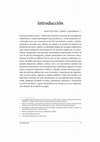
El proyecto Buen Conocer-FLOK Society 5 ha sido un proceso de investigación colaborativa y diseño... more El proyecto Buen Conocer-FLOK Society 5 ha sido un proceso de investigación colaborativa y diseño participativo para promover y crear propuestas encaminadas hacia una economía social del conocimiento común y abierto, centrado en Ecuador pero abierto a la región y al mundo. El proyecto ha permitido articular y definir un detallado modelo de sociedad colaborativa cuya matriz productiva está basada en los comunes cognitivos, el conocimiento compartido y las prácticas comunitarias tradicionales. El fruto de casi un año de investigación y diseño participativo son veinticinco documentos de políticas públicas (de los que en este volumen publicamos catorce), divididos por áreas o sectores socio-económico-institucionales (por ejemplo educación, software, cultura, etc.). Los documentos analizan las formas de explotación y de acumulación del capitalismo cognitivo en cada sector, proponen alternativas viables y, además, extraen principios generales de políticas públicas de casos de estudio y experiencias de implantación en otros países, regiones o espacios (dentro o fuera de Ecuador). Las diferentes versiones de estos documentos, en sus distintas fases de desarrollo, pudieron accederse en línea, comentarse, discutirse y reutilizarse con licencias libres 6 y siguen disponibles en la red para su uso y reapropiación después de la edición en papel.
Buen Conocer / FLOK Society como proceso de investigación colaborativa y diseño participativo Bue... more Buen Conocer / FLOK Society como proceso de investigación colaborativa y diseño participativo Buen Conocer-FLOK Society 1 v. 1.0 18/03/2015
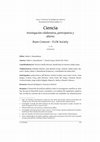
El desarrollo de politicas publicas sobre la investigacion cientifica es clave hoy dia para el de... more El desarrollo de politicas publicas sobre la investigacion cientifica es clave hoy dia para el desarrollo social y economico. Los modelos del capitalismo cognitivo han cercado los comunes de la ciencia (incluidos sus resultados, las infraestructuras de desarrollo y gran parte de su organizacion), dentro de una serie de estrictas barreras legales y tecnologicas. Esto ralentiza el desarrollo cientifico generando beneficios extraordinarios a un pequeno numero de corporaciones e instituciones privadas. Sin embargo, modelos alternativos de publicacion cientifica, de participacion ciudadana, asi como de infraestructuras de colaboracion y organizacion de la investigacion comienzan a abrirse camino a escala global, desafiando los presupuestos capitalistas de la produccion y gestion del conocimiento. Bajo las etiquetas de Open Science (Ciencia Abierta), Science 2.0 (Ciencia 2.0), e-Science (e-Ciencia) o Science Commons (Procomun Cientifico), esta teniendo lugar una masiva transformacion de l...
Introducción: el ciclo 15M 15M: un movimiento de plazas en red por una democracia real (2011) 86 ... more Introducción: el ciclo 15M 15M: un movimiento de plazas en red por una democracia real (2011) 86 Mutaciones 15M: el movimiento más allá de las acampadas (2012-2013) 91 Experimentos representativos: Partido X, Podemos y Barcelona en Común (2013-2015) 94 Conclusiones 103 Referencias 106 segunda parte haCia La Ciudad deMoCrátiCa: anáLisis y baLanCe de Las poLítiCas púbLiCas de Los gobiernos MuniCipaListas IV. Políticas públicas municipalistas y acción de gobierno en las ciudades del cambio, Ana Méndez de Andés Aldama 113 Introducción 113 Ciudad futura 115 Arenas de la política 125 Desde, contra y más allá del Estado 129 El municipalismo como política direccional 138 Referencias 141

Artificial Life, 2008
has drawn inspiration from biology mainly at two levels: i) a bottom-up modelling approach concei... more has drawn inspiration from biology mainly at two levels: i) a bottom-up modelling approach conceiving cognition as the evolutionary complexification of adaptive behaviour, and ii) appeals to self-organization in the domain of behaviour and neural dynamics in analogy with selforganized chemical and biological processes. But little attention has been paid to the possibility of conceiving (and modelling) behaviour in terms of a self-maintaining organized unity in analogy with minimal forms of proto-cellular (or autopoietic) life. We propose that the behavioural counterpart of a network of self-sustaining chemical reactions should be a network of interactively maintained sensorimotor dissipative structures (habits) that emerge from the continuous reciprocal interaction between brain, body and world (and not, as in previous attempts, between molecular processes and neural processes, conceiving the nervous system as operationally closed-Varela, 1979, Principles of Biological Autonomy, Elsevier).
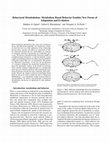
Artificial Life, Aug 1, 2010
Both metabolism and behavior play a key role in biological theory and artificial life modelling. ... more Both metabolism and behavior play a key role in biological theory and artificial life modelling. Yet, despite their centrality there has been very little exploration of the relationship between these concepts and almost no exploration of how the interaction between the two could impact on evolution or instantiate alternative mechanisms for evolutionary processes. We present a simulation model of bacteria capable of metabolism-based chemotaxis: a minimal metabolic system capable of modulating behavior by influencing the probability of flagellar rotation (like in E. coli chemotaxis). We perform two illustrative experiments. In the first, the incorporation of a chemical compound into metabolism qualitatively improves the chemotactic strategy. In the second, an encounter with a specific chemical compound leads to a reaction that opens up a new metabolic pathway while automatically regulating chemotaxis towards that same compound. Both experiments illustrate the adaptive potential of metabolism-based behavior and can be used to explore the idea of "Behavioral Metabolution," a co-evolutionary synergy between behavior and metabolism. We abstract some principles of behavioral metabolution and discuss its application to early prebiotic evolution.
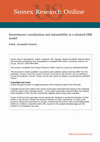
Connection science, Dec 1, 2012
Oscillatory phenomena are ubiquitous in nature and have become particularly relevant for the stud... more Oscillatory phenomena are ubiquitous in nature and have become particularly relevant for the study of brain and behaviour. One of the simplest, yet explanatorily powerful, models of oscillatory coordination dynamics is the the HKB (Haken-Kelso-Bunz) model. The metastable regime described by the HKB equation has been hypothesized to be the signature of brain oscillatory dynamics underlying sensorimotor coordination. Despite evidence supporting such a hypothesis, to our knowledge there are still very few models (if any) where the HKB equation generates spatially situated behaviour and, at the same time, has its dynamics modulated by the behaviour it generates (by means of the sensory feedback resulting from body movement). This work presents a computational model where the HKB equation controls an agent performing a simple gradient climbing task and shows i) how different metastable dynamical patterns in the HKB equation are generated and sustained by the continuous interaction between the agent and its environment; and ii) how the emergence of functional metastable patterns in the HKB equation-i.e. patterns that generate gradient climbing behaviour-depends not only on the structure of the agent's sensory input but also on the coordinated coupling of the agent's motor-sensory dynamics. This work contributes to Kelso's theoretical framework and also to the understanding of neural oscillations and sensorimotor coordination.

Frontiers in Psychology, 2013
According to the sensorimotor approach, perception is a form of embodied know-how, constituted by... more According to the sensorimotor approach, perception is a form of embodied know-how, constituted by lawful regularities in the sensorimotor flow or in sensorimotor contingencies (SMCs) in an active and situated agent. Despite the attention that this approach has attracted, there have been few attempts to define its core concepts formally. In this paper, we examine the idea of SMCs and argue that its use involves notions that need to be distinguished. We introduce four distinct kinds of SMCs, which we define operationally.These are the notions of sensorimotor environment (open-loop motor-induced sensory variations), sensorimotor habitat (closed-loop sensorimotor trajectories), sensorimotor coordination (reliable sensorimotor patterns playing a functional role), and sensorimotor strategy (normative organization of sensorimotor coordinations). We make use of a minimal dynamical model of visually guided categorization to test the explanatory value of the different kinds of SMCs. Finally, we discuss the impact of our definitions on the conceptual development and empirical as well as model-based testing of the claims of the sensorimotor approach.

Oxford University Press eBooks, Jun 22, 2017
This book elaborates a series of contributions to a non–representational theory of action and per... more This book elaborates a series of contributions to a non–representational theory of action and perception. It is based on current theoretical developments in the enactive approach to life and mind. These enactive ideas are applied and extended to provide a theoretically rich, naturalistic account of sensorimotor meaning and agency. This account supplies non–representational extensions to the sensorimotor approach to perceptual experience based on the notion of the living body as a self–organizing dynamic system in coupling with the environment. The enactive perspective entails the use of world–involving explanations, in which processes external to an agent co–constitute mental phenomena in ways that cannot be reduced to the supply of information for internal processing. These contributions to sensorimotor theories are a dynamical–systems description of different types of sensorimotor regularities or sensorimotor contingencies, a dynamical interpretation of Piaget's theory of equilibration to ground the concept of sensorimotor mastery, and a theory of agency as organized networks of sensorimotor schemes, with its implications for sensorimotor subjectivity. New tools are provided for examining the organization, development, and operation of networks of sensorimotor schemes that compose regional activities and genres of action with their own situated norms. This permits the exploration of new explanations for the phenomenology of agency experience that are favorably contrasted with traditional computational approaches and lead to new empirical predictions. From these proposals, capabilities once beyond the reach of enactive explanations, such as the possibility of virtual actions and the adoption of socially mediated abstract perceptual attitudes, can be addressed.
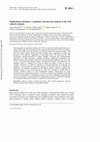
Information, Communication & Society, May 20, 2015
The emergence of network-movements since 2011 has opened the debate around the way in which socia... more The emergence of network-movements since 2011 has opened the debate around the way in which social media and networked practices make possible innovative forms of collective identity. We briefly review the literature on social movements and 'collective identity', and show the tension between different positions stressing either organization or culture, the personal or the collective, aggregative or networking logics. We argue that the 15M (indignados) network-movement in Spain demands conceptual and methodological innovations. Its rapid emergence, endurance, diversity, multifaceted development and adaptive capacity, posit numerous theoretical and methodological challenges. We show how the use of structural and dynamic analysis of interaction networks (in combination with qualitative data) is a valuable tool to track the shape and change of what we term the 'systemic dimension' of collective identities in network-movements. In particular, we introduce a novel method for synchrony detection in Facebook activity to identify the distributed, yet integrated, coordinated activity behind collective identities. Applying this analytical strategy to the 15M movement, we show how it displays a specific form of systemic collective identity we call 'multitudinous identity', characterized by social transversality and internal heterogeneity, as well as a transient and distributed leadership driven by action initiatives. Our approach attends to the role of distributed interaction and transient leadership at a mesoscale level of organizational dynamics, which may contribute to contemporary discussions of collective identity in network-movements.
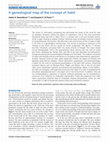
Frontiers in Human Neuroscience, Jul 21, 2014
The notion of information processing has dominated the study of the mind for over six decades. Ho... more The notion of information processing has dominated the study of the mind for over six decades. However, before the advent of cognitivism, one of the most prominent theoretical ideas was that of Habit. This is a concept with a rich and complex history, which is again starting to awaken interest, following recent embodied, enactive critiques of computationalist frameworks. We offer here a very brief history of the concept of habit in the form of a genealogical network-map. This serves to provide an overview of the richness of this notion and as a guide for further re-appraisal. We identify 77 thinkers and their influences, and group them into seven schools of thought. Two major trends can be distinguished. One is the associationist trend, starting with the work of Locke and Hume, developed by Hartley, Bain, and Mill to be later absorbed into behaviorism through pioneering animal psychologists (Morgan and Thorndike). This tradition conceived of habits atomistically and as automatisms (a conception later debunked by cognitivism). Another historical trend we have called organicism inherits the legacy of Aristotle and develops along German idealism, French spiritualism, pragmatism, and phenomenology. It feeds into the work of continental psychologists in the early 20th century, influencing important figures such as Merleau-Ponty, Piaget, and Gibson. But it has not yet been taken up by mainstream cognitive neuroscience and psychology. Habits, in this tradition, are seen as ecological, self-organizing structures that relate to a web of predispositions and plastic dependencies both in the agent and in the environment. In addition, they are not conceptualized in opposition to rational, volitional processes, but as transversing a continuum from reflective to embodied intentionality. These are properties that make habit a particularly attractive idea for embodied, enactive perspectives, which can now re-evaluate it in light of dynamical systems theory and complexity research.

Oxford University Press eBooks, Jun 22, 2017
It has been recognized that the sensorimotor approach needs to be extended to account for not onl... more It has been recognized that the sensorimotor approach needs to be extended to account for not only the pragmatic aspects of perception but also the subjective phenomenology that characterizes experiences of the world and the self. In this chapter, the notion is proposed that sensorimotor agency can serve as the basis for a non-representational, world-involving theory of how agents perceive themselves as being the authors and in control of their actions. Both intentional and movement-related aspects in the phenomenology of agency experience are linked to processes of sensorimotor scheme selection and enactment in a self-sustaining network of interdependent sensorimotor schemes. The proposal is contrasted with traditional computational models in the context of various cases of pathological agency experience, and the ontological status of the sense of agency it implies is clarified in comparison with philosophical alternatives that deny its distinct experiential character.
Neural Computation, Jan 11, 2022
Active role of selfsustained neural activity on sensory input processing: a minimal theoretical m... more Active role of selfsustained neural activity on sensory input processing: a minimal theoretical model Article (Accepted Version) http://sro.sussex.ac.uk Santos, Bruno A, Gomes, Rogerio M, Barandiaran, Xabier E and Husbands, Phil (2022) Active role of self-sustained neural activity on sensory input processing: a minimal theoretical model. Neural Computation.
Frontiers in Human Neuroscience, Apr 20, 2015

Oxford University Press eBooks, Jun 22, 2017
An enactive sensorimotor approach to perception places the agent at the center of the engagements... more An enactive sensorimotor approach to perception places the agent at the center of the engagements that constitute a perceptual act. The notion of agency required, however, cannot be based solely on an organism’s biological well-being. Interests beyond mere survival guide many activities that animals with rich sensorimotor lives engage in. It is proposed that the processes that individuate a sensorimotor agent are the very acts that it performs, and that a network of precarious but mutually stabilizing sensorimotor schemes can satisfy the conditions of agency. Compatibility is demonstrated with dynamical approaches to behavioral development, as well as with psychological theories that support the view of a networked behavioral organization. The interdependence of agency at the organismic, sensorimotor, and social levels is discussed, as well as the relevance of sensorimotor agency, to understand the inherent meaningfulness of perception for the perceiver, as well as her subjectivity.
Lecture Notes in Computer Science, 2011
The viability of a living system is a non-trivial concept, yet it is often highly simplified in m... more The viability of a living system is a non-trivial concept, yet it is often highly simplified in models of adaptive behavior. What is lost in this abstraction? How do viability conditions appear in the first place? In order to address these questions we present a new model of an autopoietic or protocellular system simulated at the molecular level. We propose a measurement for the viability of the system and analyze the 'viability condition' that becomes evident when using this measurement. We observe how the system behaves in relation to this condition, generating instances of chemotaxis, behavioural preferences and simple (yet not trivial) examples of action selection. The model permits the formulation of a number of conclusions regarding the nature of viability conditions and adaptive behaviour modulated by metabolic processes.
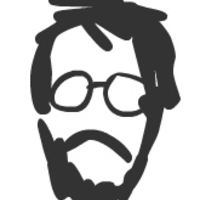


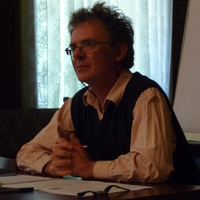




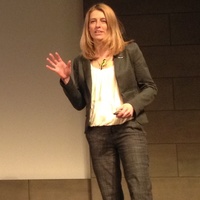


Uploads
Papers by Xabier E. Barandiaran
http://deditore.com/prodotto/datacrazia/